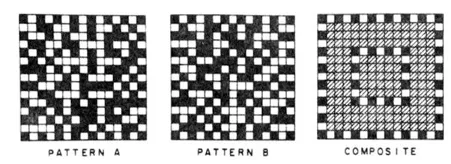It is a common belief that there are people who have photographic memories. They can supposedly remember any image with detailed accuracy and reproduce it without much effort. We decided to check whether science confirms this phenomenon.
People with photographic memories are filmed TV show and write articles. The media reported that they had a useful feature Nikola Tesla, Ivan Aivazovsky, Sergei Rachmaninov, John Paul II. Twitter owner Elon Musk also considered to be the lucky owners of a rare gift. Photographic memory is also attributed to artistic heroes, for example Lisbeth Salander from the Millennium trilogy by Swedish writer Stieg Larsson, Doctor Strange from the Marvel Cinematic Universe and Sherlock Holmes. You can find special ones on the Internet tests, which promise to reveal such a gift in you, and offer various techniques for him development.
Under photographic memory usually understand the ability to look at an image and instantly save a copy of it in your head. In the scientific community, this type of memorization is called eidetic memory (from ancient Greek εἶδος - “image”, “appearance”). Cambridge Dictionary gives The following definition of eidetic memory is: “The ability to remember things in precise detail, as if you could see them in your mind.”
According to book outstanding Soviet psychologists Alexander Luria and Lev Vygotsky “Etudes on the history of behavior: Monkey. Primitive. Child,” the phenomenon of eidetic memory was first described by the Serbian scientist V. Urbancic in 1907. Throughout the 20th century, it was studied by doctors and neurologists. In 1979, Professor Ralph Norman Haber of the University of Illinois published article “Twenty years of obsessive eidetic images: where is the ghost?”, in which he summarized the results of a long-term study of memory abilities among children of primary school age. During this time, Haber found dozens of people with the so-called eidetic gift. According to his data, about 8% of subjects were endowed with this ability. To determine whether a person has such a memory, Haber conducted an experiment: he placed a child in front of an easel on which he placed different pictures. At first he simply showed something simple, such as a red square, and then removed it, asking the child to try to see the square where it was before. After that, he showed a more complex picture, such as an illustration from a children's book. The subjects were given 30 seconds to memorize the image. When the picture was removed, the child was asked if he still saw something where the picture was. Most gave a negative answer, but some of them said that they still saw the picture and could describe it in detail.
When we hear that someone can see a non-existent image as if it were actually still on the easel, we think that the person somehow “photographed” it and stored it in memory. But the more eidetics were studied, the more obvious it became that this was not the case. Eidetic children made the same mistakes as everyone else. They remembered things incorrectly, their brains added things to the pictures that weren't there, and sometimes they changed their minds about what they saw. The only way these children differed was the subjective experience of seeing the image in the same place compared to simply recalling details about it from memory.
The experiment specifically mentions small children for a reason. Majority research showed that practically none of the adults have the ability to form eidetic images, and among adolescents such numbers are 2–10%. It is unknown why exactly this happens. Perhaps the main reason is that adults, more often than children, try to verbally and visually encode a picture in memory, which interferes with the formation of eidetic images.
It’s easy to find tests on the Internet that supposedly prove that you have eidetic memory, but they have little to do with reality. However, you can check whether you have a superpower using test composite image, which was developed by Kent Gummerman and Cynthia Gray during their search for an "objective eidetic".
Their basic idea was that if a person truly has eidetic memory, he should remember not just complex pictures, but also meaningless pictures, such as a random grid of black and white squares.
A true eidetic must not only see the picture itself after it has disappeared, but also be able to visualize it on top of a new, similar image, creating a composite image. As a result, the subject had to see a combined secret symbol that could not be guessed simply by seeing one of the two images separately.

In total, the scientists tested 270 people (mostly children), and no one passed the composite image test. But due to the fairly small sample, there was still a chance of a person with perfect eidetic memory emerging.
Research continued, and in 1979 John Merritt published results a photographic memory test that he had previously posted in magazines and newspapers across the country. Merritt hoped that someone would be able to demonstrate eidetic abilities, and he estimates that about 1 million people have tried their hand at the test. A total of 30 people wrote to Merritt with the correct answer, and he visited them at home. However, in the end, no one was able to complete the supervised test.

And yet, science may still know one person who has eidetic memory. Even before all these studies, in 1970, scientist Charles Strohmeyer published the results of his research, which featured a Harvard student named Elizabeth. She could remember a page with a poem in a foreign language unknown to her, which she had seen many years ago, and reproduce the text without any problems. Elizabeth claimed to have used this ability frequently in her high school and undergraduate exams, but for some reason this gift was not as useful during her graduate studies.
Stromeyer tested her memory in a way we were already familiar with. He showed Elizabeth a random dot stereogram, which was a sheet of black paper with several hundred dots. She was given a minute to study it with her right eye. He then gave her a second stereogram to look at with her left eye. As a result, she was able to combine the pictures and see the hidden letter T.

The results of the experiment are impressive, but are not recognized in the scientific community. Strohmeyer and Elizabeth married, and she refused any further tests of her ability. Until now, no one else has been able to record a case of possessing eidetic memory. Can assumethat Elizabeth was exceptional, but most likely the research simply was not objective.
The following fact indirectly supports the fact that photographic memory does not exist: world memory championships, which have been held since 1991, a person with an eidetic method of memorizing information has never won in any nomination.
Thus, there is not yet a single case of the existence of photographic memory documented by the scientific community. Of course, there are people with unusually good memories, but no one has yet been able to reconstruct a photograph in detail, much less reproduce abstract drawings, just by looking at them.
Cover image: Vox.com

Most likely not true
Read on the topic:
- Is it true that chewing gum impairs the perception of information?
- Is it true that the human brain can remember information during sleep?
If you find a spelling or grammatical error, please let us know by highlighting the error text and clicking Ctrl+Enter.






